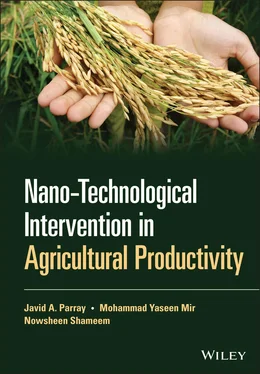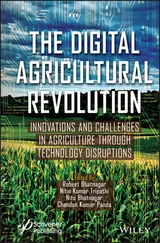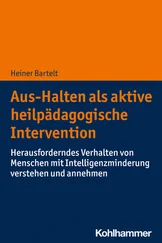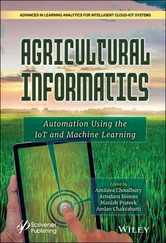1 ...6 7 8 10 11 12 ...16 61 61 Cho, C.H., Aspetti, C.O., Park, J., and Agarwal, R. (2013). Silicon coupled with plasmon nanocavities generates bright visible hot luminescence. Nat. Photonics 7: 285–289.
62 62 Chowdhury, F.I., Nayfeh, M.H., and Nayfeh, A.M. (2016). Enhanced performance of thin‐film silicon solar cells with a top film of silicon nanoparticles due to down‐conversion and near resonance charge transport. J. Sol. Energy 125: 332–338.
63 63 Swinehart, D.F. (1962). The Beer‐Lambert law. J. Chem. Educ. 39: 333. https://doi.org/10.1021/ed039p333.
64 64 Peng, K., Fu, L., Yang, H., and Ouyang, J. (2016). Perovskite LaFeO3/−montmorillonite nanocomposites: synthesis, interface characteristics and enhanced photocatalytic activity. Sci. Rep. 6: 19723. https://doi.org/10.1038/srep19723.
65 65 Eustis, S. and El‐Sayed, M.A. (2006). Why gold nanoparticles are more precious than pretty gold: noble metal surface plasmon resonance and enhancement of the radiative and nonradiative properties of nanocrystals of different shapes. Chem. Soc. Rev. 35: 209–217. https://doi.org/10.1039/B514191E.
66 66 Khlebtsov, N. and Dykman, L. (2010). Optical properties andbiomedical applications of plasmonic nanoparticles. J. Quant. Spectrosc. Radiat. Transf. 111: 1–35. https://doi.org/10.1016/j.jqsrt.2009.07.012.
67 67 Khlebtsov, N.G. and Dykman, L.A. (2010). Optical properties and biomedical applications of plasmonic nanoparticles. J. Quant. Spectrosc. Radiat. Transfer 111: 1–35. https://doi.org/10.1016/j.jqsrt.2009.07.012.
68 68 Reiss, G. and Hutten, A. (2005). Magnetic nanoparticles: applications beyond data storage. Nat. Mater. 4: 725–726. https://doi.org/10.1038/nmat1494.
69 69 Faivre, D. and Bennet, M. (2016). Materials science: magnetic nanoparticles line up. Nature 535: 235–236. https://doi.org/10.1038/535235a.
70 70 Qi, M., Zhang, K., Li, S. et al. (2016). Superparamagnetic Fe3O4 nanoparticles: synthesis by a solvothermal process and functionalization for a magnetic targeted curcumin delivery system. New J. Chem. 4480: 4480–4491. https://doi.org/10.1039/c5nj02441b.
71 71 Wu, W., He, Q., and Jiang, C. (2008). Magnetic iron oxide nanoparticles: synthesis and surface functionalization strategies. Nanoscale Res. Lett. 3: 397–415. https://doi.org/10.1007/s11671-008-9174-9.
72 72 Guo, D., Xie, G., and Luo, J. (2014). Mechanical properties of nanoparticles: basics and applications. J. Phys. D: Appl. Phys. 47: 13001. https://doi.org/10.1088/0022-3727/47/1/013001.
73 73 Lee, S., Choi, S.U.‐S., Li, S., and Eastman, J.A. (1999). Measuring thermal conductivity of fluids containing oxide nanoparticles. J. Heat Transfer 121: 280–285. https://doi.org/10.1115/1.2825978.
74 74 Cao, Y.C. (2002). Nanoparticles with Raman spectroscopic fingerprints for DNA and RNA detection. Science 80 (297): 1536–1540. https://doi.org/10.1126/science.297.5586.1536.
75 75 Loureiro, A., Azoia, N.G., Gomes, A.C., and Cavaco‐Paulo, A. (2016). Albumin‐based nanodevices as drug carriers. Curr. Pharm. Des. 22: 1371–1390.
76 76 Alexis, F., Pridgen, E., Molnar, L.K., and Farokhzad, O.C. (2008). Factors affecting the clearance and biodistribution of polymeric nanoparticles. Mol. Pharmaceutics 5: 505–515. https://doi.org/10.1021/mp800051m.
77 77 Ali, A., Zafar, H., Zia, M. et al. (2016). Synthesis, characterization, applications, and challenges of iron oxide nanoparticles. Nanotechnol. Sci. Appl 9: 49–67. https://doi.org/10.2147/NSA.S99986.
78 78 Jain, P.K., Lee, K.S., El‐Sayed, I.H., and El‐Sayed, M.A. (2006). Calculated absorption and scattering properties of gold nanoparticles different size, shape, and composition: applications in biological imaging and biomedicine. J. Phys. Chem. B 110: 7238–7248. https://doi.org/10.1021/jp057170o.
79 79 Calvo, P., Remuoon‐Lopez, C., Vila‐Jato, J.L., and Alonso, M.J. (1997). Novel hydrophilic chitosan‐polyethylene oxide nanoparticles as protein carriers. J. Appl. Polym. Sci. 63: 125–132. https://doi.org/10.1002/(SICI)1097-4628(19970103)63:1*125::AID-APP13*3.0.CO;2-4.
80 80 Laurent, S., Forge, D., Port, M. et al. (2010). Magnetic iron oxide nanoparticles: synthesis, stabilization, vectorization, physicochemical characterizations, and biological applications. Chem. Rev. 110: 2064–2110. https://doi.org/10.1021/cr900197g.
81 81 Zhang, J. and Saltzman, M. (2013). Engineering biodegradable nanoparticles for drug and gene delivery. Chem. Eng. Prog. 109: 25–30.
82 82 Prashant, K.J. and Ivan, H.S. (2007). Au NPs target cancer. Nano Today 2: 19–29.
83 83 Chen, C., Xing, G., Wang, J. et al. (2005). Multihydroxylated [Gd@C82(OH)22]n nanoparticles: antineoplastic activity of high efficiency and low toxicity. Nano Lett. 5: 2050–2057. https://doi.org/10.1021/nl051624b.
84 84 AshaRani, P.V., Low Kah Mun, G., Hande, M.P., and Valiyaveettil, S. (2009). Cytotoxicity and genotoxicity of silver nanoparticles in human cells. ACS Nano 3: 279–290. https://doi.org/10.1021/nn800596w.
85 85 Hajipour, M.J., Fromm, K.M., Ashkarran, A.A. et al. (2012). Antibacterial properties of nanoparticles. Trends Biotechnol. 30: 499–511. https://doi.org/10.1016/j.tibtech.2012.06.004.
86 86 Yin, Q., Wu, W., Qiao, R. et al. (2016). Glucose assisted transformation of Ni‐doped‐ZnO@carbon to a Ni‐dopedZnO@void@SiO2 core–shell nanocomposite photocatalyst. RSC Adv. 6: 38653–38661. https://doi.org/10.1039/C5RA26631A.
87 87 Todescato, F., Fortunati, I., Minotto, A. et al. (2016). Engineering of semiconductor nanocrystals for light‐emitting applications. Materials 9: 672. https://doi.org/10.3390/ma9080672.
88 88 Weiss, J., Takhistov, P., and McClements, D.J. (2006). Functional materials in food nanotechnology. J. Food Sci. 71: R107–R116. https://doi.org/10.1111/j.1750-3841.2006.00195.x.
89 89 Lei, Y.‐M., Huang, W.‐X., Zhao, M. et al. (2015). Electrochemiluminescence resonance energy transfer system: mechanism and application in ratiometric aptasensor for lead ion. Anal. Chem. 87: 7787–7794. https://doi.org/10.1021/acs.analchem.5b01445.
90 90 Unser, S., Bruzas, I., He, J., and Sagle, L. (2015). Localized surface plasmon resonance biosensing: current challenges and approaches. Sensors 15: 15684–15716. https://doi.org/10.3390/s150715684.
91 91 Ripp, S. and Henry, T.B. (eds.) (2011). Biotechnology and Nanotechnology Risk Assessment: Minding and Managing the Potential Threats Around Us, ACS Symposium Series. Washington, DC: American Chemical Society http://dx.doi.org/10.1021/bk-2011-1079.
92 92 Golobič, M., Jemec, A., Drobne, D. et al. (2012). Upon exposure to Cu nanoparticles, accumulation of copper in the isopod Porcellio scaber is due to the dissolved Cu ions inside the digestive tract. Environ. Sci. Technol. 46: 12112–12119. https://doi.org/10.1021/es3022182.
93 93 Swadeshmukul, S., Peng, Z., Kemin, W. et al. (2001). Conjugation of biomolecules with luminophore‐doped silica nanoparticles for photostable biomarkers. Anal. Chem. 73: 4988–4993. https://doi.org/10.1021/AC010406+.
94 94 Tratnyek, P.G. and Johnson, R.L. (2006). Nanotechnologies for environmental cleanup. Nano Today 1: 44–48. https://doi.org/10.1016/S1748-0132(06)70048-2.
95 95 Mueller, N.C. and Nowack, B. (2008). Exposure modeling of engineered nanoparticles in the environment. Environ. Sci. Technol. 42: 4447–4453. https://doi.org/10.1021/es7029637.
96 96 Rogozea, E.A., Petcu, A.R., Olteanu, N.L. et al. (2017). Tandem adsorption‐photodegradation activity induced by light on NiO‐ZnO p–n couple modified silica nanomaterials. Mater. Sci. Semicond. Process. 57: 1–11. https://doi.org/10.1016/j.mssp.2016.10.006.
97 97 Rogozea, E.A., Olteanu, N.L., Petcu, A.R. et al. (2016). Extension of optical properties of ZnO/SiO2 materials induced by incorporation of Au or NiO nanoparticles. Opt. Mater. 56: 45–48. https://doi.org/10.1016/j.optmat.2015.12.020.
Читать дальше











![Chade-Meng Tan - Search Inside Yourself - Increase Productivity, Creativity and Happiness [ePub edition]](/books/703803/chade-thumb.webp)
